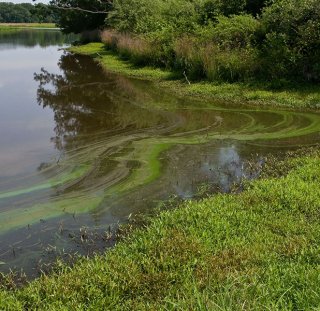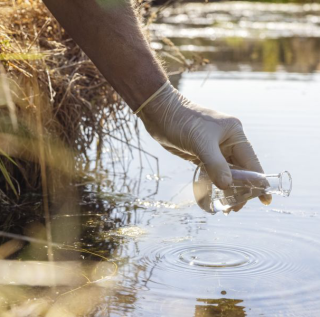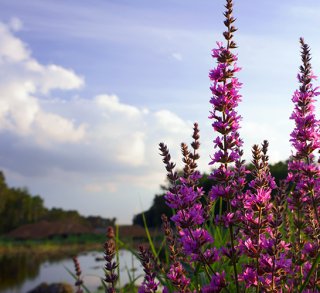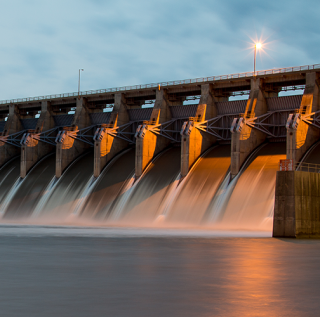Exploring Estuaries: What Challenges Do Our Estuaries Face?

Estuaries face a host of common challenges. Because we love and depend on the water, more than half of the people in the United States live within 100 miles of the coast, including on the shores of estuaries. And more and more people are moving to these areas. Coastal communities are growing three times faster than counties elsewhere in the country.
Unfortunately, as more people flock to the shore, we are upsetting the natural balance of estuaries and threatening their health. We endanger our estuaries by polluting the water and building on the lands surrounding them. These activities can contribute to unsafe drinking water, beach and shellfish bed closings, harmful algae blooms, declines in fisheries, loss of habitat, fish kills, and a host of other human health and natural resource problems.
On this page:
Too Many Nutrients

Plants and animals need nutrients, or "food," such as nitrogen and phosphorus, in order to grow. However, if an estuary has too many nutrients, too much algae will grow, creating algae blooms. These algae blooms block sunlight and can suffocate fish and plant life by using up valuable oxygen from the water. Nutrients can enter estuaries from sewage treatment plants, septic systems, fertilizers used in farming and on lawns, and polluted air from power plants and cars.
Pathogens

Pathogens are tiny microorganisms that can cause diseases in people and animals. Examples of pathogens include viruses, bacteria, and parasites. People can get sick from pathogens by eating contaminated shellfish such as shrimp or lobster. If pathogens contaminate an estuary, cities and towns will close beaches and shellfishing areas so people aren't allowed to use them. Pathogens find their way into estuaries through leaky septic systems, inadequately treated sewage, runoff from farms, pollution from boats and marinas, and waste from pets and wildlife.
Habitat Loss and Change
Estuaries provide habitats, or "homes," for countless fish and other wildlife. These habitats—which include coastal marshes and seagrasses—provide food, shelter, nesting, and resting areas for a broad array of animals. In addition, these habitats also filter out pollution from the water and protect the surrounding region from flooding. However, as we build more homes and businesses surrounding estuaries and pave new roads we are destroying precious habitats and threatening the health of entire estuaries.
Invasive Species

Sometimes plants and animals that don't grow naturally in an area, also known as "invasive species," can end up in estuaries—either accidentally or intentionally. This can drive out "native" plants and animals; destroy the surrounding habitat; interfere with people who are trying to boat, fish, or swim there; and introduce pathogens into the environment.
Invasive species can spread quickly because they have no natural predators or little competition from other species. Examples include oyster drills, Chinese mitten crabs, and Brazilian pepper trees. These and other invasive species often wind up in estuaries as accidental passengers on ships. Sometimes fish or plants are imported into the country to be sold in aquariums, raised in nurseries, or used in ornamental landscaping but make their way into estuaries by accident.
Changes in Water Flow

In many parts of the country, freshwater is a scarce resource because so many people need it—for their homes, schools, farms, factories, and other uses. Because it is in such high demand, state and local governments continue to search for new, inexpensive supplies of freshwater.
Options include building dams to trap water from rivers, pumping water from the ground, and dredging for new sources of water. Each of these activities can change the timing and amount of freshwater that enters our estuaries, and natural drought cycles only make their effects worse. Reducing the amount of freshwater flowing into estuaries can cause erosion and sedimentation and interfere with fish reproduction, shellfish survival, bird nesting, and seed distribution because the water becomes too salty.
